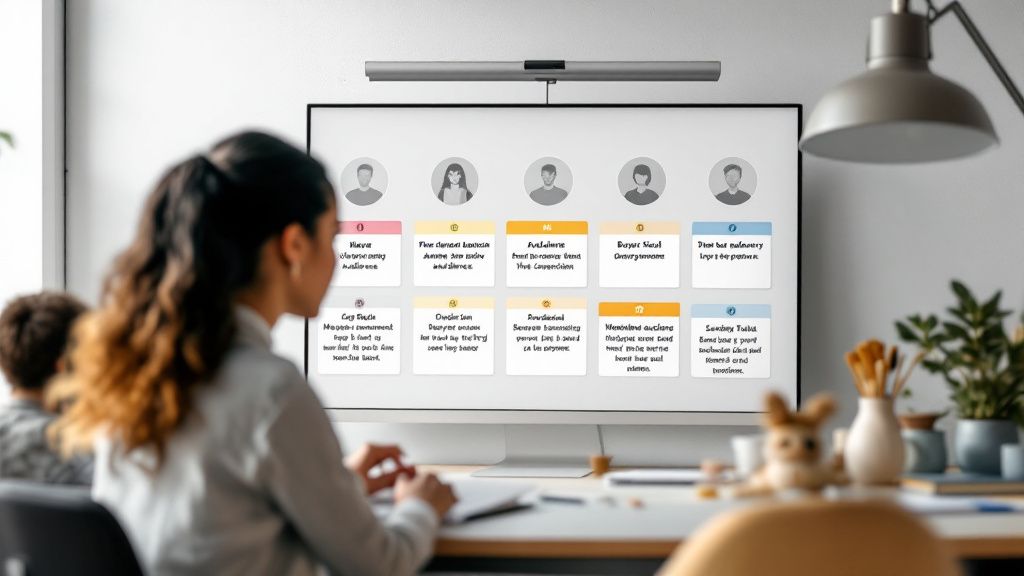It’s not uncommon for tenants to ask for upgrades—whether it’s a new dishwasher, better lighting, or updated flooring. But how should landlords respond to these requests, especially when they're not required by law or lease? Striking the right balance between improving the property and protecting your bottom line is key.
This guide breaks down when tenant upgrade requests make sense, how to evaluate them, and what to say when the answer is yes, no, or maybe later.
Why Tenants Ask for Upgrades
Tenants want to feel at home—and when something feels outdated or inconvenient, they’re likely to speak up. Common reasons behind upgrade requests include:
- Functionality: An old appliance no longer works efficiently
- Aesthetics: Dated features detract from comfort or pride in the space
- Lifestyle: Tenants who work from home may want better lighting, extra outlets, or faster internet options
In many cases, tenants are simply asking for improvements that reflect how they use the space daily.
Are Landlords Required to Approve Upgrades?
In most situations, landlords are not required to approve or fund upgrades unless:
- The item is broken or no longer meets habitability standards
- The feature was promised in the lease but wasn’t delivered
However, thoughtful upgrades can increase tenant satisfaction, reduce turnover, and even raise the rental value in the future. That’s why many landlords consider these requests on a case-by-case basis.
How to Evaluate Upgrade Requests
Before responding, consider the following:
1. Is it a repair or an actual upgrade?
Sometimes, a tenant may call something an upgrade when it’s really a necessary repair (e.g., a broken oven that’s 20 years old).
2. Who benefits more?
Would the change increase your property’s value or appeal to future tenants? If so, it might be a smart investment.
3. What's the cost and timeline?
Upgrades that are relatively inexpensive and easy to install (like a new kitchen faucet or blinds) might be worth approving, even mid-lease.
4. Is it a trend or a lasting improvement?
Some upgrades, like smart thermostats or efficient lighting, can offer long-term benefits. Others may not hold up over time or suit future renters.
RentalRiff’s local pros often help landlords evaluate upgrade viability—balancing practicality, cost, and long-term value.
Common Tenant Upgrade Requests (and How to Handle Them)
Appliances
- Landlord’s Perspective: If it still works, replacement isn’t required—but energy efficiency and noise level may matter.
- Middle Ground: Consider offering a cost-sharing agreement if the tenant wants a newer model.
Paint or Wall Treatments
- Landlord’s Perspective: Custom paint may be hard to reverse at turnover.
- Response Tip: Allow limited color choices and require repainting to original condition upon move-out.
Fixtures and Hardware
- Landlord’s Perspective: Small changes (like cabinet knobs or shower heads) are low-risk.
- Response Tip: Allow upgrades as long as they’re reversible and approved in writing.
Flooring or Carpets
- Landlord’s Perspective: Costly and may require vacant units for installation.
- Response Tip: Reserve this for turnovers unless the current flooring is damaged or unsafe.
Internet or Tech Upgrades
- Landlord’s Perspective: Requests for better Wi-Fi or smart devices are increasing.
- Response Tip: Consider these as value-adds for long-term retention and property appeal.
How to Say “Yes”—Without Losing Control
When approving upgrades, protect yourself and the property:
- Get everything in writing
- Specify who pays for the labor and materials
- Clarify whether the upgrade stays with the unit after move-out
- Require professional installation if safety or warranty is a concern
This sets clear expectations and avoids disputes later.
How to Say “No” (Without Burning Bridges)
Not every request makes sense—and that’s okay. But how you deliver a “no” matters.
Use responses like:
- "We’re planning larger updates during the next turnover—thanks for your patience in the meantime."
- "We appreciate the idea, but unfortunately we’re not able to take on that cost at this time."
- "Let’s revisit this at lease renewal—we may be able to work something out then."
Providing a reason shows respect and maintains the relationship.
Offer Alternatives When You Can
Even if you can’t meet the exact request, consider:
- Offering a lower-cost version (e.g., new blinds instead of custom drapes)
- Allowing the tenant to do it themselves (with approval)
- Bundling upgrades into lease renewal incentives
Tenants don’t expect every request to be approved—but they do appreciate being heard.
RentalRiff helps landlords manage upgrades with clarity—connecting you to professionals who can assess, install, and document improvements properly.
When Upgrades Are a Smart Move
Sometimes, an upgrade request is the push you need to modernize. Consider approving tenant requests when:
- It will reduce maintenance calls (e.g., replacing an unreliable appliance)
- It boosts rental appeal and value
- It helps retain a great tenant
Upgrades made strategically—not emotionally—can pay for themselves over time.
Clear Communication = Fewer Surprises
Tenant upgrade requests don’t have to be awkward. With a structured response process and a clear evaluation method, landlords can:
- Make better financial decisions
- Maintain positive relationships
- Keep their rentals competitive in the market
At the end of the day, a tenant who wants to invest in their living space is often a tenant worth keeping.
And with help from local property specialists like those at RentalRiff, you can manage improvements wisely, keeping your property modern without losing control of your budget.

